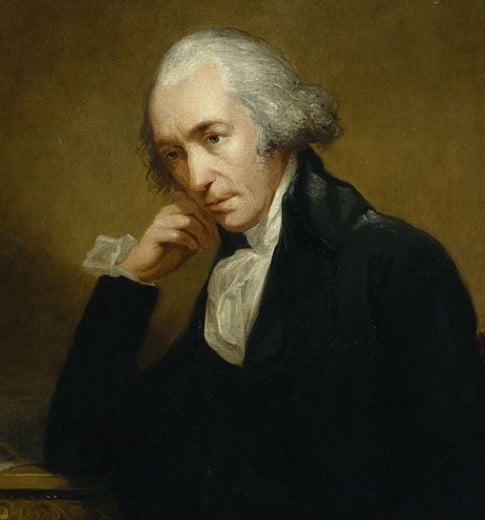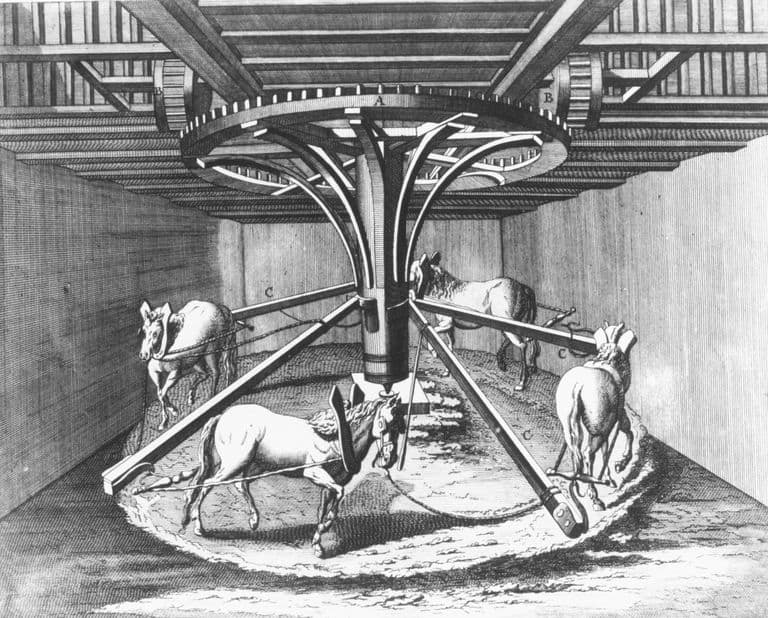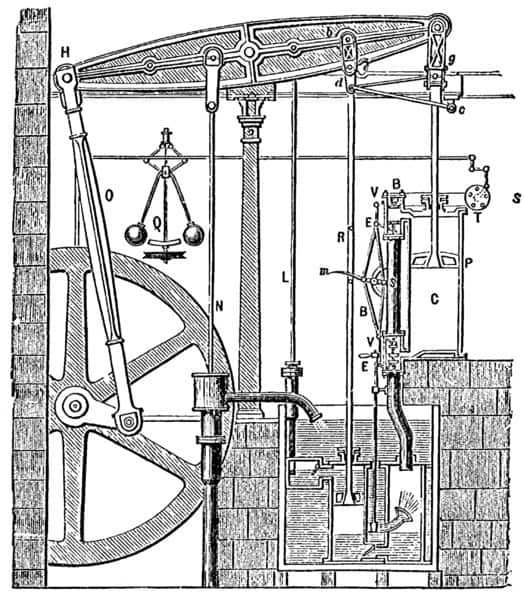Here’s the short answer: Horsepower is a unit of measurement referring to the power produced by a mechanical engine, though it was inspired by horses.

The long answer involves lessons in history and mathematics, so buckle in.
The story starts with a Scottish-born engineer names James Watt who he set out to improve the performance and efficiency of steam engines in the late 1760s. He eventually created a steam engine that required less steam to function and was capable of rotary motion that could be used to spin wheels.
By 1776, Watt’s new steam engine was introduced commercially, but wasn’t easily accepted by businesses that still used horses to generate power, especially grinding mills.
Watt put on his marketing hat and came up with a way to prove that steam engines produced more power and at a faster rate than horses could.
How did he do this? He went to the Kentucky Derby, sipped on a mint julep and envisioned the perfect mathematical equation, at least that’s what I’m sure he would rather have done. Too bad the Kentucky Derby didn’t start till 1875.
In reality, Watt observed mill horses turning a mill’s central shaft by walking in a circle 24-feet in diameter, which they accomplished around 144 times per hour. Watt estimated that each horse pushed with a force of 180 pounds.

With this information, he determined one horse could produce about 33,000 foot-pounds per minute.

What does that even mean? Lance Geiger, the host of The History Guy YouTube series, explains it best:
“Imagine a single horse raising a 33-pound bucket from the bottom of a thousand-foot deep well in one minute. The energy it takes to raise that bucket is one horsepower.”
Watt claimed his engine could harness the power of 200 horses at once and rated it at 200 horsepower. This claim boosted the success of the steam engine as it powered the Industrial Revolution.
Whether accurate or not, horsepower became a standard term used to describe the output of an engine and plays a huge role in automotive marketing today.
Your car’s horsepower is determined by a specific mathematical equation that wouldn’t exist without Watt’s less-than-accurate findings. This equation goes as follows:
Horsepower = (torque x RPM) / 5,252
So, if I drive a car that generates 480 foot-pounds of torque at 3,000 rpm, I’d divide 1,440,000 by 5,252, giving me an answer of 274 horsepower.
The more horsepower and torque a car has, the faster it will accelerate and the more appealing it is to the buyers – unless, of course, your big concern is of fuel economy.
After your Kentucky Derby champion has been crowned, follow ClassicCars.com to Baltimore, Maryland, for the second leg of the Triple Crown, where we partner with StableDuel for its popular Preakness Stakes contest. With a guaranteed prize pool of $20,000!
ClassicCars.com and StableDuel, where horsepower meets horsepower.





